Jen Gilroy's Blog, page 16
March 7, 2019
Celebrating grandmothers
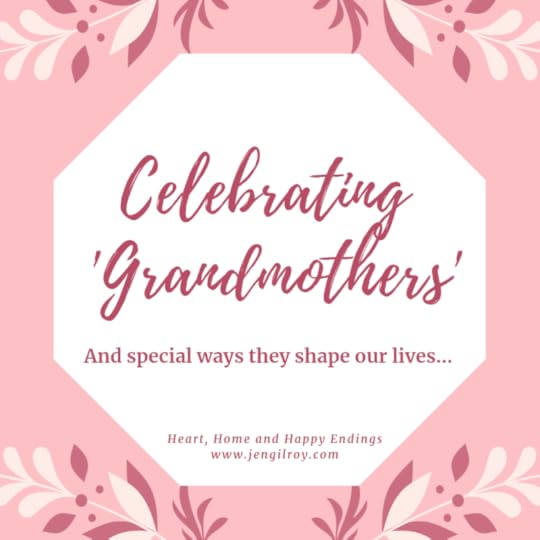
Earlier this week, English Rose bounced into the house with the kind of teenage excitement usually reserved for a meme, ‘tea’ (gossip between friends), or afternoon at the mall.
“Look what Grandma J gave me,” she said, gesturing to the colourful bracelet on her wrist. “It’s from her trip. She brought back presents for all her grandchildren.”
As I admired the pretty and thoughtful gift, my heart squeezed. Because although English Rose calls her “Grandma,” J is a dear family friend and neighbour, not a grandmother by blood.
I was reminded, though, of the importance of grandmothers (and women like grandmothers) in our lives—and how blessed I’ve been to have multiple grandmas both ‘real’ and ‘adopted.’
Family history
My two grandmothers by birth were part of my life until my twenties so I have special memories of both.
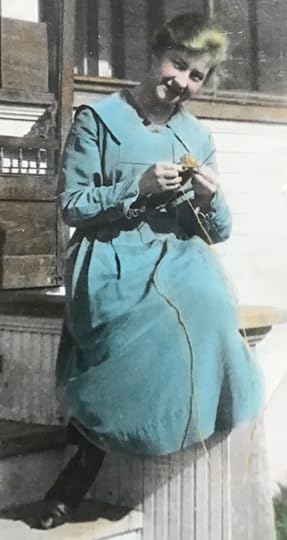
My dad’s mother lived nearby and since we shared an interest in music, reading, and writing, that grandma had an especially important influence on my life.
Indeed, my first published story, a piece in the local newspaper when I was eleven, was inspired by Grandma’s small-town childhood.
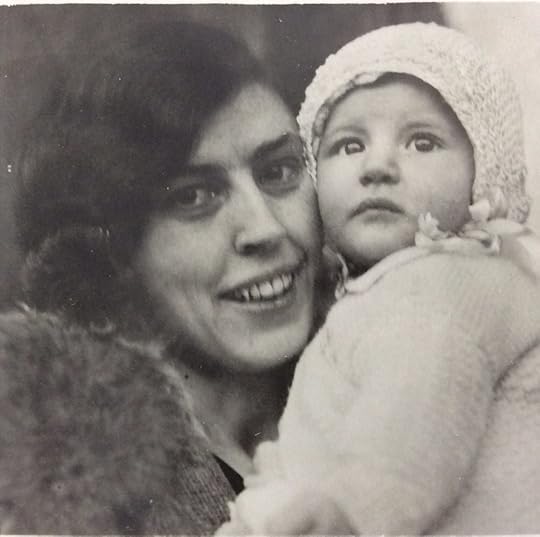
My mom’s mother lived in another part of Canada (over a thousand miles away) so visits with her were limited to Christmas and summer holidays.
Yet, and although she was less ‘present,’ she influenced me too and her home, an old Ontario yellow brick house, was, at least to my childish eyes, magical.
From its chilly stone cellar to dusty, shadowed attic, that house held clues to the long-ago world of my nineteenth century Irish ancestors. And thanks to that house and Grandma’s stories, houses play a special role in my fiction.
Unconditional love and acceptance
As I both experienced and saw through my mother’s bond with English Rose, a grandmother’s love is different than that of a mother.
Without the immediate necessity to set (and enforce) rules and expectations, a grandmother can be more easygoing—and spontaneous.
My grandmothers were a source of candy in church (and why, in my mind, peppermints are indelibly linked with tedious sermons), tablecloths to dress up in, and were the only ones to truly appreciate why bannisters were made to slide down, preferably at speed.
Most importantly, and even when my relationship with my own mother was tense , I always knew my grandmas loved and accepted me for exactly who I was.
New experiences and learning
My grandmothers by family, and the three I acquired by informal ‘adoption,’ helped open my world to new experiences and learning.
From formal concerts to impromptu sing-alongs, picnics at a lake to afternoon tea by the sea, and from the best way to groom a Pekingese dog (continually), and wear pearl jewelry (anytime as long as you wear it with flair), the grandmothers in my life were wise teachers—but always with a generous dose of fun.
Inspiring women
In many parts of the world, March is Women’s History Month, a time to remember and celebrate the impact women who came before have on our lives today.
Although I’m grateful for the ‘named’ women in history—those who fought for women’s suffrage, campaigned for human rights, or made a mark in politics, the arts, or scientific endeavour, I’m also mindful of the ‘unsung’ heroines.
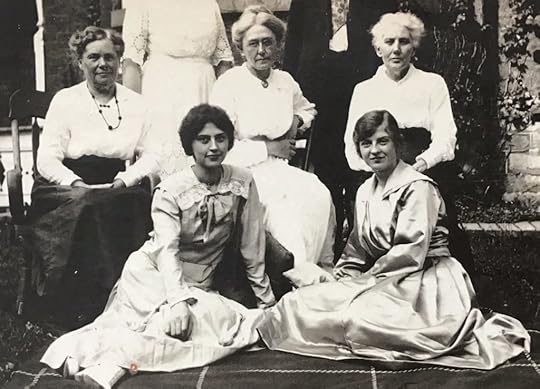
These are the women who quietly go about their everyday lives, making a difference in their families and communities without fanfare or wider recognition, but whose influence, like those of grandmothers, helps make us the adults we become.
With the death of my mom, her beloved Nana, and with Tech Guy’s mom ‘lost’ in the heartbreaking wilderness of advanced dementia, English Rose is sadly lacking in the ‘official’ grandmother department. However, other women, like sweet Grandma J, play an important role in her life.
As my daughter and I navigate the tumultuous teenage years—that complex (and often conflicted) dance between attachment and separation—I’m grateful for the accepting, loving, and understanding ‘grandmothers’ who support English Rose in ways I can’t.
And as a now ‘motherless’ daughter, women like Grandma J play a role in my life too—still teaching, still offering new experiences, and helping me in ways large and small.
Although I’ll likely never again spend hours grooming a Pekingese dog (as I did the summer I was ten), I still wear pearls with flair, think of one of my adopted English grannies whenever there is rain before seven (because, of course, it will be fine by eleven), and draw on some aspect of my family history for every story I write.
So, thank you to all the ‘grandmothers’ who do what you do for the younger women in your lives. Today and every day, I’m celebrating you!
New book news
Because sometimes happy endings are only a wish away…
In case you missed the announcement on social media, the title of my new book coming out later this year (release date to be confirmed) is The Wishing Tree in Irish Falls.
This story also features the wisdom of grandmothers, and I’m excited about sharing it with you.
February 21, 2019
My life in laundry
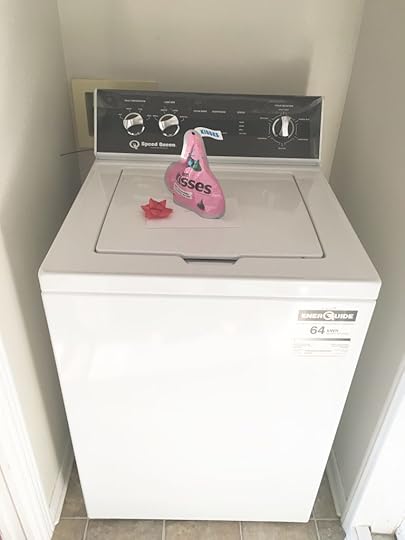
As you may have seen on Twitter, Tech Guy and I got a new washing machine last week.
Not only did it mark a milestone in my complicated relationship with laundry but, and in a clear indication of advancing middle age, few things in recent years have brought me so much excitement.
The wringer washer
One of my earliest childhood memories is watching my mother and her mother labouring with my grandmother’s ancient wringer washer.
On a hot and humid July morning, I was sent outside to sit on a sun-warmed step and told to stay there, far away from the machine that clanked in a corner of the back shed, steam rising from its galvanized tub like the cauldron of some evil witch.
Although my mother soon got an automatic washer, I’d already formed the indelible impression that laundry was not only labor intensive but dangerous—as the horrific tales of wringer washing machine injuries whispered about by Grandma and her friends attested.
Communal washing days
When I left home for university, I was catapulted into an era of stockpiling coins to feed communal washing machines—always in short supply unless I had nothing better than laundry to do on Friday and Saturday nights.
Sadly, and unlike what is often depicted in movies, no cute guys did their laundry at the same time as me.
And when I came face-to-face with a bat in the gloomy laundry area of a student rental house, I was on my own, awaiting the arrival of the animal protection officer who’d “helpfully” advised me to “stay put” on the other side of a flimsy wooden door and not approach the animal “in case it was rabid.”
Happily ever after…
After Tech Guy and I got married, I moved into the house he’d bought several years before, a fossilized shrine to 1970’s décor including orange shag carpet, metallic avocado green wallpaper and, in the basement, a matching harvest gold washing machine and tumble dryer.
While we updated the rest of the house to reflect late 1990’s chic, their (to me) atrocious color didn’t impede function so the harvest gold appliances stayed, still going strong almost thirty years after their purchase by a previous owner.
Laundry goes international
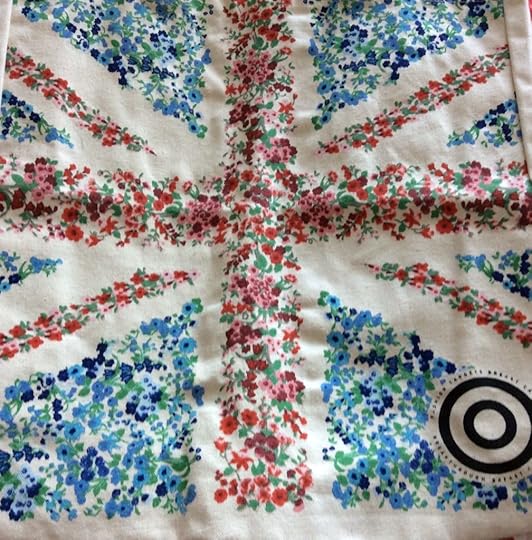
Our move to England, though, ushered in a new era of laundry adventures.
In one flat (apartment), a trendy new build in a newly trendy part of London, I discovered the dubious joys of the “combined” washer/dryer.
Whilst some such models may work brilliantly, ours did not and since the flat didn’t feature an airing cupboard (an essential attribute of the British home), we became accustomed to sodden washing festooned 24/7 not only from a collapsible drying rack but from every available doorknob and rail.
After Tech Guy got a new job and we moved west of London to a “maisonette” in a pretty Berkshire village, our washing machine woes continued.
Not only did the new machine break at regular intervals, but the repair technician, with whom I was soon on a first-name, cup of tea sharing basis, proclaimed our model to be “absolutely the worst” then on the consumer market.
When we left the maisonette for a terraced house on the other side of the village, we gained another new washing machine and, with a new baby English Rose, I was filled with hope for a happier laundry future.
Yet, that machine was also plagued with problems . When it finally reached the spin cycle (over an hour in), the noise escalated to such a crescendo that my visiting dad likened the sound to an aircraft thundering down a runway at London Heathrow, twenty miles away.
In addition, the front-loading door often fell off. On one memorable occasion, I sat in our galley kitchen with my back propped against a cupboard and my feet holding the door in place until the wash cycle finished—so English Rose had the clean school uniform she needed for the following day.
Home is where the washer is

Once back in Canada, we bought a house with a ground floor laundry room. For the first time in my life I had a separate and efficient laundry space.
But soon, the malicious laundry fairy struck again. The washing machine (which came with the house) not only cleaned clothes but was what Tech Guy dubbed a “combination washer-shredder,” ripping seams, pulling necklines out of shape, and tearing delicate items from zippered mesh laundry bags.
Deciding enough was enough, and after due research and saving of money, we finally settled on a new machine, supposed to be the most durable model on the market, (lasting twenty years or more), easy to repair, with superior but gentle washing function, and low noise.
Delivery day, the day after Valentine’s Day, was the best Valentine present ever and, as I write, I trust a new, less stressful era of domestic life beckons.
Now if only the dishwasher hadn’t started making a grinding sound…
February 7, 2019
Why do I write?
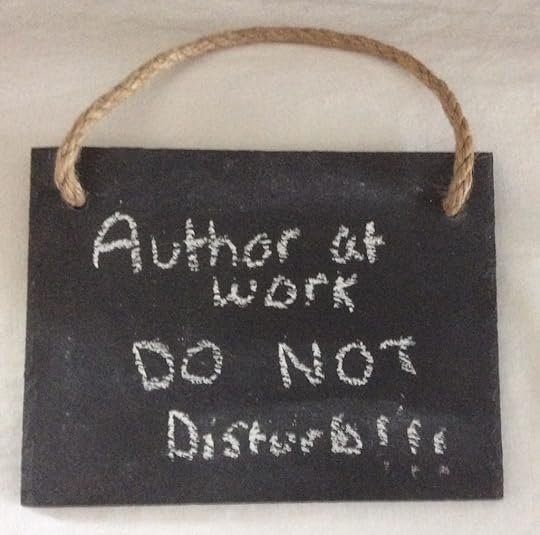
In a Facebook group this week, another writer asked: “Why do you write?”
While the answer is different for each writer, the question made me think about the constants from when I first started my writing journey—enthusiastic and starry eyed—through to now—still enthusiastic but more realistic.
Making sense of the world
Making sense of the world I live in has always driven my need to write about it.
It’s also why I sometimes can’t easily separate reading from writing because in this area, the two are closely intertwined.

From childhood, reading has helped me learn about the world. And when I started writing toward publication, being an avid reader made me a better writer.
Reading teaches me about words, syntax, and how to tell a story. It also teaches me about human relationships, conflict, and emotion.
And as an author, I seek to apply that learning on the page, all the while giving it my own twist.
Lifelong learning
I’m the first to admit I’m easily bored, but in writing I’ve never had to limit my learning.
From researching interesting jobs (in my book coming out later this year, the hero is a songwriter and his son is studying animation), to tackling advanced craft through specialist online courses, the only limits to my writing are self-imposed.
Writing also gives me a vehicle to exercise my innate curiosity—the what, whys, where, and how that occupy my busy brain.
Playing with words and language
As someone who has always loved words, writing for a living is like playing in the best sandbox ever.
While some find joy in cooking a complex dish, creating a garment, or fashioning items out of wood or another material, I find my joy using words to tell stories.
Sometimes frustrating, often painful, but always meaningful, choosing words and shaping them into a narrative gives me a satisfaction I haven’t found through any other creative outlet.
The core of who I am
The days when I don’t write are those when I’m not fully who I am.
Even when I labored in the corporate trenches (with a boss who told me to “take an email” in an unfortunate echo of the autocratic boss in the now-classic film, 9 To 5), writing gave me an inexplicable sense of self.
And whether I write for publication or not, the act of writing meets an innate need. Not only does it renew, stimulate, and challenge me but, and like the fictional characters I write about, it also helps me become the best possible version of myself.
What I get back
As a published author, there is nothing better than receiving messages from readers.
Not only those who encourage me to keep writing, ask about new books, or refer to my characters like friends, but those who share that a story has helped them through a tough time.
For me, there is no higher compliment, and I’m touched and humbled to have a made a positive difference in someone’s life.
Why I write…

Changes from day to day and season to season, but for me, writing has always been more necessity than indulgence—and a magic portal to hope, possibilities, and discovery.
And when I’m sad, angry, or scared, it’s also both outlet and escape.
At a fundamental level, when I write from my heart, I also find home.
And despite rejection (every writer’s gut-wrenching companion), the joy of writing never fails to deliver my very own happy ending.
As for that boss who saw me as his “email writer” on call? Even if I eventually redeem them in fiction, there’s a bit of him in most of the anti-heroes I write.

Because as this coaster on my desk (a gift from a friend) says: “Careful what you say, you may be in my next novel.”
We writers are sneaky that way!
January 24, 2019
Hunkering down for winter

I grew up in a Canadian city (profiled in a documentary “Colder Than Mars”) that is either celebrated, or depending on your perspective, reviled for the harshness of its winter weather.
Now I live near a place that this week garnered the dubious distinction as the world’s coldest capital city.
Yet, despite proximity to this season’s many beauties, I am not, by nature, a winter person.
As soon as autumn’s crisp air is but a faint memory, I settle in with thermal socks and heated blanket at the ready, a stock of tea and hot chocolate in the pantry, a winter “survival kit” in the trunk (boot) of my car, and industrial-size pots of moisturizer to protect against cold days and frosty nights.
Perhaps because it’s been an especially bone-chilling few days with temperatures hovering around -37 Celsius, I realized I spend five months of the year ‘hunkered down.’
But since the Canadian winter is an inescapable part of my life, I then reminded myself to “count the pluses” (as my sweet mom used to say) instead of bemoaning the negatives.
Books and Netflix
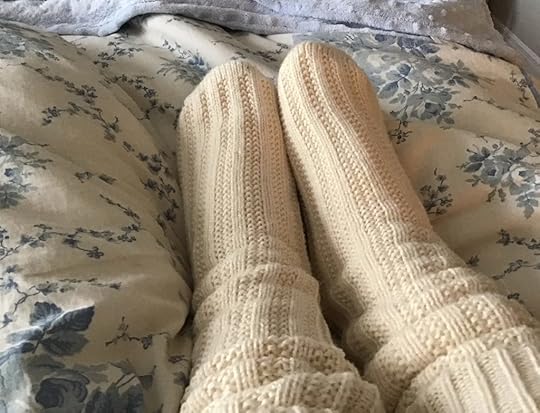
Cozy in my reading socks and with a warm Floppy Ears snuggled by my side, winter is a time to sit by the fire, read, watch films, and refill my creative well.
So far in January, I’ve read five books, have two more in progress, and have also watched numerous Netflix shows—yay for the return of a new series of Grace and Frankie here in North America!
Candles
Eating by candlelight isn’t an exception in my house but an almost daily occurrence.
After the night draws in, there’s nothing better than pulling the curtains and lighting a candle (or oil lamp).
Not only is it calming, but there’s something about that soft glow that encourages lingering over a meal and more family conversation too.
Heat, hot water and indoor plumbing
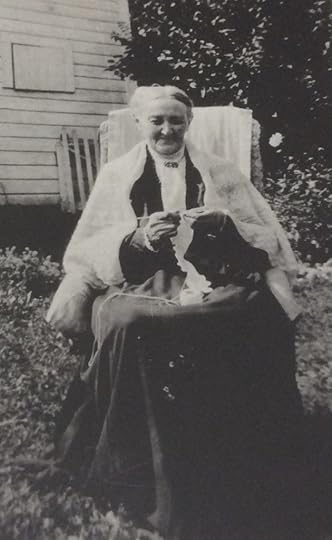
Back in the 1840s, my Irish ancestors settled near where I now live. Their long-ago log house, recorded in early census data, had none of the modern conveniences to which I’m accustomed.
What would it be like to use an outdoor privy (outhouse) on frigid winter days, bathe (at most once a week) in a tub with water heated over a fire, or wrestle with a wood stove to cook family meals?
I’m grateful I don’t have to find out!
Winter walks

Wearing the right clothes (cue thermal long underwear), I find special contentment walking along a woodland path in winter, crisp snow crunching beneath my boots, and cold air sweeping life’s cobwebs away.
And when I lived in England, and during rain-soaked walks from my daughter’s school to my then day job, I often longed for snowy woods—and now they’re on my doorstep.
Embracing the season
When there’s no prospect of a Caribbean beach in real life, I haul out an old CD and put Canadian music icon, Gordon Lightfoot’s “Song for a Winter’s Night,”on the player.
So while I hunker down for winter (wrapped in the gorgeous shawl a dear friend sent me for Christmas), I also try to embrace and be grateful for this cozy time of simple pleasures.
And if all else fails?

Both books I’m currently working on are set in summer so at least in fiction I can retreat to a world where temperatures are balmy, flowers lush, and characters spend long, lazy days on the porch.
After all, no matter how long and harsh this winter season, there is always the gentle, if elusive, promise of spring.
January 10, 2019
A year to cultivate
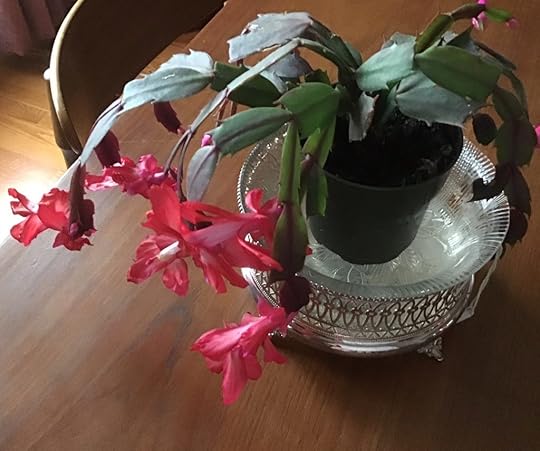
In the past few weeks, my social media feeds have been dotted with posts from those who have chosen a particular word to guide them through 2019.
I’ve chosen a ‘word for the year’ since 2014 (read more here), and because I don’t usually make resolutions (and never in January), choosing a special word to refer back to has often given me a helpful point of focus, especially during difficult or troubling times
For 2019, ‘my word’ is cultivate. I come from generations of rural people but am not a gardener, and although my houseplants are thriving, I suspect it’s more due to good luck and judicious window placement than inherent horticultural skill.
Yet, in the last few weeks of 2018, references to ‘cultivate’ were seemingly everywhere.
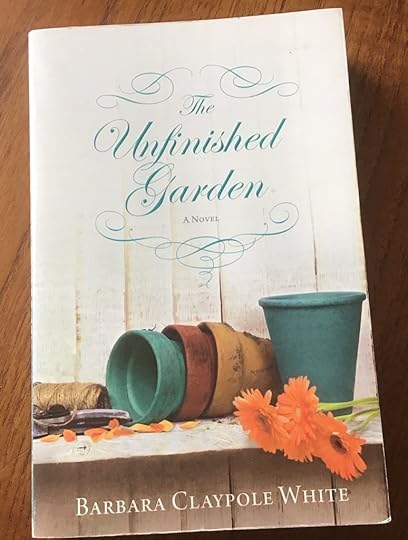
My bedtime reading was Barbara Claypole White’s The Unfinished Garden, a women’s fiction novel where gardens are metaphors for character growth and change.
And although it’s been many years since I studied French literature, while searching for something else I came across an online article about the eighteenth century French writer, philosopher, and historian Voltaire, still known for that famous phrase, “Il faut cultiver notre jardin” (translated as we must cultivate our garden, in other words, tend to our own affairs).
‘Cultivating’ also spoke to me in other ways including through devotional reading, holiday advertising, and an article about book marketing for authors.
For me, ‘to cultivate’ applies in many different contexts and after 2018, my year of courage, when I stepped out of my comfort zone to explore new directions in both life and writing, this year it’s time to nurture those nascent seeds.
In my writing, I want to continue to grow my craft, cultivating new skills, new ways of expressing my stories and, as I release both a new book and German translations of my Firefly Lake series, reach new readers and engage in new communities.
I plan to cultivate health too, paying more attention to not only what I eat (Note to self: Limit mindless grazing!), but also my work-life balance, stress management, and asthma care.
And I want to cultivate friendships old and new. As I grow older, loyal and trusted friends are more important than ever and like plants, those relationships need nurturing to not only survive but thrive.
And not least, I’m cultivating my family, being open to new adventures and building on the steps we took at the end of last year to develop new coping tools and resources to help English Rose live her best possible life, despite ongoing medical challenges.
Tech Guy doesn’t choose a word for the year, but he also comes from a rural background, although unlike me is a keen gardener. As such, he has plans for ‘cultivating’ of his own in 2019, starting with spring planting to replace the grass, trees, and shrubbery destroyed by construction work near our home.

Now if we can only prevent Floppy Ears from ‘cultivating’ too—digging holes in each muddy patch of ground she spots!
No matter how you mark the start of 2019, I wish you a year filled with good things, happy times, and books to read!
December 20, 2018
A world of kindness
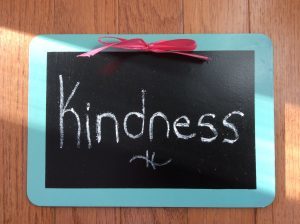 Several weeks ago, and to celebrate the first birthday of Back Home at Firefly Lake, I offered a giveaway on my Facebook author page. For a chance to win a signed paperback and holiday ornament, I asked my readers to leave a comment about a random act of kindness they’d either given or received.
Several weeks ago, and to celebrate the first birthday of Back Home at Firefly Lake, I offered a giveaway on my Facebook author page. For a chance to win a signed paperback and holiday ornament, I asked my readers to leave a comment about a random act of kindness they’d either given or received.
With almost 200 entries, the response was both wonderful and heartwarming. In ways large and small, giving to others is alive and well amongst my readers, and I was touched by how these real-life ‘angels’ are making a positive difference to their families, friends, communities, and wider world.
After another troubling year of grim news headlines, this illustration of human goodness—and doing for neighbours as we would wish to have done to us—has helped me end 2018 with more optimism. 
In the past few months, there has also been a great deal of kindness (and angels) in my life.
At Holland Bloorview Kids Rehabilitation Hospital in Toronto, where English Rose was treated from November into December and the two of us lived for a month, the staff are, as we expected, consummate professionals.
Yet, they were also kind, offering compassionate words, hugs, and unfailing gentle consideration to patients and families in their care.
Also kind were the numerous community groups—choirs, bands, actors, puppeteers, and more—who entertained us at the hospital and brightened our lives.
And when we came home after that long and tiring month away, kind friends and neighbours had left us a homemade meal. That nourishment for our bodies was accompanied by a sweet ‘welcome home’ note that nourished our souls.
Yes, there are bad things happening in our world, but there are many kind things too and each of us, in our own lives, has the power to give and pass kindness along, and also be and advocate for changes we want to see.
My word for 2018 has been courage, and while I’ve indeed needed courage over the past twelve months, in those difficult times I’ve also experienced more kindness than I could ever have imagined.
I haven’t yet chosen a word for 2019, but it already holds some exciting things.
 I’ll have a new book out (release date and title to be confirmed), and I’m looking forward to sharing it with you. The story features a wishing tree, a big Irish-American family, music, secrets and, not least, yummy treats since the heroine works in her family’s bakery.
I’ll have a new book out (release date and title to be confirmed), and I’m looking forward to sharing it with you. The story features a wishing tree, a big Irish-American family, music, secrets and, not least, yummy treats since the heroine works in her family’s bakery.
I’m also thrilled and honoured that German rights to my Firefly Lake books have sold and the trilogy will be published in German translation beginning in April 2019 (now available for Amazon pre-order).
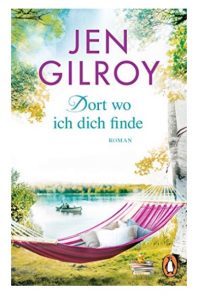 Here’s the German edition of the first book in the series, The Cottage at Firefly Lake. I have cover love!
Here’s the German edition of the first book in the series, The Cottage at Firefly Lake. I have cover love!
Best of all, though, the Holland Bloorview treatment programme helped English Rose and our family immeasurably, and we have new tools, resources and new hope that English Rose is better prepared and supported to live her best possible life, even with ongoing medical challenges.
I’m taking a break from blogging over Christmas and New Year but will be back on 11 January 2019.
For those who celebrate it, I wish you a blessed Christmas, and to all, a joyful new year.
Thank you for your kindness in reading my blog and continuing to share in my life and writing.
December 6, 2018
Take two characters: From Back Home at Firefly Lake to The Blue Castle (& a giveaway too)
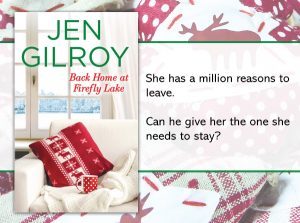 This week, I celebrated the first birthday of Back Home at Firefly Lake, the third book in my Firefly Lake series—books that blend contemporary romance with women’s fiction and take place in a small Vermont town.
This week, I celebrated the first birthday of Back Home at Firefly Lake, the third book in my Firefly Lake series—books that blend contemporary romance with women’s fiction and take place in a small Vermont town.
As part of this celebration, I’ve written a guest post for my friend Susanna Bavin’s blog choosing two favourite characters, one from Back Home at Firefly Lake, and the other from The Blue Castle by Canadian author (better known for Anne of Green Gables), L.M. Montgomery.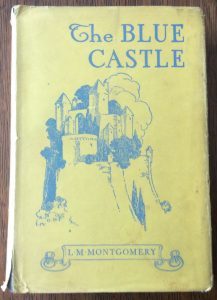
Read the guest post on Susanna’s site here and, if you’re so inclined, leave a comment for us, too.
Susanna lives by the sea in Wales but writes historical fiction (sagas for my British readers) set in the north of England. I’m currently reading and loving her new release, The Sewing Room Girl.
If you enjoy romantic women’s fiction and/or chick lit, I’m also currently participating in a giveaway with a number of other romance, women’s fiction, and chick lit authors.
Two lucky winners will receive a collection of romantic women’s fiction/chick lit (and some contemporary and historical romance) books too, plus the grand prize winner will also receive a new e-Reader.
Just for entering, you’ll also receive a collection of free reads.
 You could win my book, Back Home at Firefly Lake, plus books from a number of authors I enjoy reading.
You could win my book, Back Home at Firefly Lake, plus books from a number of authors I enjoy reading.
Click here to enter this giveaway, open internationally. (Ends 12 December 2018).
I’ll be back with a regular blog post just before Christmas, and my winter author newsletter comes out before the end of the month too. If you don’t already subscribe to that quarterly (and/or new release) e-mail list, you can do so here.
In the meantime, happy reading!
November 22, 2018
Home is where you make it
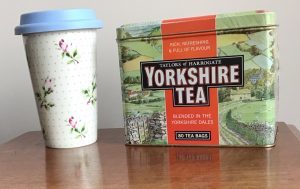 From tea in my favourite mug to so much more, I’m a homebody.
From tea in my favourite mug to so much more, I’m a homebody.
After many moves and other travel, I draw strength and comfort from living in a place where my roots run deep, and in a home where I’m surrounded by pictures, furniture, china, and family memories going back several generations.
However, as most of you know, I’m currently away from home and in Toronto for a month while English Rose is treated at a rehabilitation hospital here.
I’ve spent the first two weeks in the condo where Tech Guy stays while he’s working in Toronto from Monday to Friday. From next week onwards, English Rose and I will be together in the hospital’s family accommodation.
I’m certainly not homeless, but I’m still ‘out of home’ and displaced from my usual space, routine, and comforts.
At home, from my back porch I see the spire of a church that dates from the 1880s. From the front porch, there’s another church spire, this one from a parish that traces its roots even earlier, to the 1820s.
In between are the homes of friends and neighbours—people who know me as “Jen Up the Hill,” mum to teen and dog, the woman who writes books, or the one who sings in a choir, takes ballet, or belongs to their book club.
I rarely step outside my house without someone waving at me, even if I don’t know them by name.
Here in Toronto, though, I’m a stranger.
 Tech Guy’s apartment complex overlooks other buildings, most less than ten years old, and beyond them, a busy road where traffic rushes by 24/7.
Tech Guy’s apartment complex overlooks other buildings, most less than ten years old, and beyond them, a busy road where traffic rushes by 24/7.
In the elevator and other common areas, people usually avoid eye contact, despite the persistent efforts of Floppy Ears to make friends.
And when I walk my happy hound, most of the time we’re traversing empty streets punctuated with deserted and now snow-rimmed patches of green space.
Tech Guy’s eighth floor apartment (filled with furniture that pre-dates our marriage twenty-two years ago, or which we acquired during our years in England) is comfortable and to some extent familiar, although very much a minimalist ‘bachelor pad!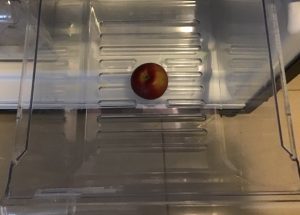
Yet, precisely because I’m ‘out of home,’ I’ve realized that home truly is where I am and what I make it.
First and foremost, home for me is love and where Tech Guy, English Rose and Floppy Ears are.
But beyond my family, home means making a conscious effort, like Floppy Ears does, to engage with people here. The mom of the toddler recovering from brain surgery whom I met in the hospital’s family room, and the elderly woman with a pug dog living nearby whom I communicate with via smiles, nods, her rudimentary English and my non-existent Russian.
It’s being open to people I pass in the corridors of Tech Guy’s building, usually while diverting Floppy Ears from tracking the delicious cooking smells emanating from behind various closed doors.
And it’s finding and exploring new places, some of which have become favourites.
It’s also rediscovering things I enjoyed before my small-town life…that special big-city buzz, gawking at fabulous shoes and up-to-the-minute fashion, eating at Chinese restaurants to rival those I frequented in Hong Kong, and having a fabulous Indian takeaway (takeout) around the corner.
 And finally, it’s being in a hospital where everyone belongs, where people understand what my family and I are going through, and where English Rose is getting the best possible treatment to live her best possible life.
And finally, it’s being in a hospital where everyone belongs, where people understand what my family and I are going through, and where English Rose is getting the best possible treatment to live her best possible life.
Home is more a feeling and less a geographical place.
However, when I forgot to pack my dressing gown, I went out and bought a new one. Adaptability only goes so far. And like a window for Floppy Ears to look out of, a cozy dressing gown is a basic requirement of life, as well as writing!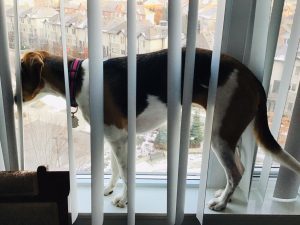
November 8, 2018
New hope and Colouring The World Orange
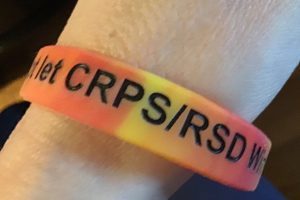 Orange is not my colour. At best, it makes me look sallow. At worst, ill.
Orange is not my colour. At best, it makes me look sallow. At worst, ill.
Yet, this month (dubbed NERVember by the International Pain Foundation), I’m taking pride in wearing orange to raise awareness of Complex Regional Pain Syndrome (CRPS, also known as Reflex Sympathetic Dystorphy, RSD), and support those, including English Rose, battling this incredibly painful and little-understood neurological system disorder.
Before January 2016, I was a mum of a seemingly healthy tween. Life had its ups and downs, but apart from regularly scheduled check-ups or the occasional minor accident, doctor and hospital visits were blessedly rare.
Then, one day, everything changed and life and mothering would never be the same.
English Rose rolled her ankle in school gym class. A few stretched ligaments said the ER doctor at our local hospital. She’ll be fine in a week or so.
Yet, the pain didn’t subside. A minor fracture said the orthopaedic specialist. Give it six weeks or so and she’ll be fine.
But the pain got worse. Don’t worry said our then family doctor. Everything looks okay.
And yet, the pain got even worse…so bad that my usually stoic daughter was screaming in agony and couldn’t even tolerate the weight of a light blanket on her swollen foot and ankle, now also a blotchy patchwork of red, white and blue.
After a trip to the emergency department at the children’s hospital 90 minutes away, we got what I thought was an answer. Little did I know then that a diagnosis of CRPS was instead the start of a long and complex journey that will shape the rest of English Rose’s life, as well as mine.
In brief, that ‘minor’ ankle fracture triggered a malfunction in English Rose’s central nervous system resulting in incorrect pain signals being sent to various parts of her body. And as she now battles the most painful condition known to modern medicine, a 45/50 on the McGill University pain scale, our family is living with a ‘new normal.’ 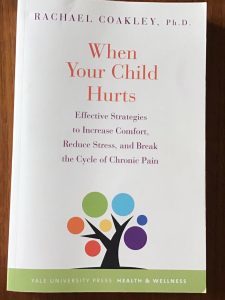
Life is a round of doctor’s appointments and hospital visits. And, since numerous other conditions are linked with CRPS, I have become an acronym expert, attuned to new symptoms that might signal an addition to what is already an alphabet soup of diagnoses.
Although I didn’t follow my late mom into a nursing career, I’ve also had to become an armchair pharmacological and medical expert, versed on side-effects, new drug trials and research about a condition for which there is a possibility of remission but currently no cure.
Perhaps most difficult of all, though, is that I’ve had to master tough love, pushing English Rose out to school and other activities to help her live as ordinary a life as possible—pacing her life but still living it, despite disability.
When you give birth to a healthy baby, you give thanks.
And each day that your child is healthy, you also give thanks.
But when life changes and you end up on a path you never expected to be on—parenting a child with special needs— you have to give thanks, too.
There are friends and family who support you and your now teen with a listening ear or caring message, a hug, a meal delivery, or who offer to spend a few hours with her so you can take a break from ‘on call’ caregiving.
There are doctors and other medical staff who listen to your concerns and try to get to the bottom of a chronic condition most have never heard of, let alone understand.
There are teachers who help make your teen’s school life more manageable.
There are organizations (like Ferocious Fighters) where you can connect with other parents and caregivers and your young person can get support as well.
And most of all, you learn to give thanks for the good days—the times when you can do things you once took for granted like going out to a restaurant, or to a museum, movie theatre or shopping.
Orange is the colour for nerve pain and CRPS is one of more than 100 (largely invisible) conditions that have nerve pain symptoms. 
This week, 5 November was #ColorTheWorldOrange Day and many landmarks around the world (including billboards in Times Square in New York City, Toronto’s CN Tower in Canada, and the Emirates Spinnaker Tower in Portsmouth, England) were lit up in orange to raise awareness, and support and give CRPS patients and their families hope.
For our family, that hope has sometimes been in short supply. Yet, for this next month we’ll have new hope and new reasons to be thankful, and it’s not only through initiatives like #ColorTheWorldOrange.
This weekend, English Rose and I are heading to Toronto for a month where she’ll be treated in an intensive programme for adolescents at a specialist rehabilitation hospital there. The only one of its kind in Canada, the programme has a good success rate in helping teens like her have a better quality of life.
For my daughter and all those suffering with CRPS, I’m not giving up hope and I’m wearing my orange, not only in November but all year round.
 Unlike Floppy Ears, who with her autumnal colouring looks gorgeous in orange (and curls up on English Rose’s Ferocious Fighters blanket whenever she can), I’ll never look my best in any colour that echoes a pumpkin!
Unlike Floppy Ears, who with her autumnal colouring looks gorgeous in orange (and curls up on English Rose’s Ferocious Fighters blanket whenever she can), I’ll never look my best in any colour that echoes a pumpkin!
But from shoes to jewelry and other accessories, there are many ways to incorporate a bit of orange into my wardrobe.
And the fashion possibilities are, like my hopes for English Rose’s future, without limits.
Find out more
Complex Regional Pain Fact Sheet
Ferocious Fighters (for young people fighting CRPS and those caring for them)
October 25, 2018
Quilts for a cause
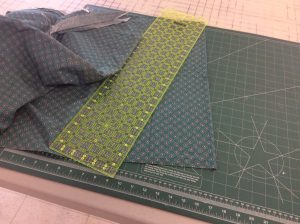 I don’t sew, knit, crochet, embroider or do any of the other handicrafts at which women on both sides of my family tree excelled.
I don’t sew, knit, crochet, embroider or do any of the other handicrafts at which women on both sides of my family tree excelled.
In junior high home economics, sewing was painful for both me and my long-suffering mother. Mom made many of her own clothes and was renowned for her knitting, but she’d been blessed with a daughter, me, who struggled to sew a straight seam and to whom sewing patterns were as incomprehensible as geometry.
But fast forward more years than I want to admit, and I now spend one Saturday morning a month volunteering my time (and dubious skills) with my small-town branch of Victoria’s Quilts Canada (VQC), an organization that makes quilts to comfort Canadians with cancer.
As with many things in my life, the path to this kind of voluntary work was far from linear.
Thanks to the beautiful quilts made by my mom’s great-aunts, quilts were part of my life from an early age, but I didn’t know how they were made. Quilts feature in some of my published books too, but to help set a scene rather than being integral to plot. 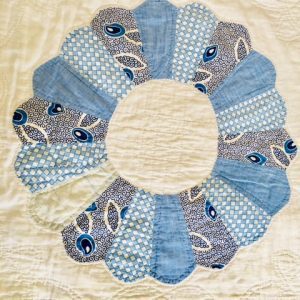
However, this spring, when the book I’m currently working on was in its early stages, the heroine’s mother became a quilter. As such, I needed to learn about quilting to ensure I referenced details correctly in fiction.
Part serendipity, part living in a small town, I met the president of the local branch of VQC and she invited me to attend a quilting ‘bee’ to help with book research.
After attending that session, I decided to return to the monthly bees, not as ‘author me,’ but as a woman with family and friends touched by cancer who wanted to do something, if only in a small way, to help.
When I expressed doubts about what I could contribute, one of the quilters (whose pragmatic manner reminded me of my late mom) said: “You can pin, can’t you?”
Yes, I can and while that comment has gone into my book, the time I spend pinning quilt tops to batting and backing to make a “quilt sandwich” is teaching me as much about life as quilting.
Although some men quilt, and indeed the sewing circle in my book has a male member, quilting bees have historically given women opportunities to talk together about their lives, families and communities, as well as bigger world issues.
Through quilting I’m part of a community of women spanning generations and geographies. The conversations over the quilt tables—about husbands, children, grandchildren, jobs, health issues and so much more—encourage me, a writer who lives much of the time inside her head, to look outwards at both the world and my life in fresh ways. 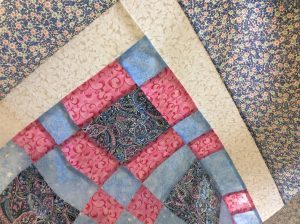
And since I’m part of a community where my mother’s family roots date to 1830, maybe it wasn’t surprising I’d meet a quilter who knew my late mom and shared precious memories of her as a girl.
Several of the VQC women have offered to teach me to quilt, but I don’t think I or they are ready for that particular challenge!
 Although I’m not a quilter, with each pin I anchor into fabric, I’m remembering and honouring loved ones whose lives were impacted by cancer…my parents, my auntie Margaret, my cousin Beth, my grandmothers, my friend Katie and more.
Although I’m not a quilter, with each pin I anchor into fabric, I’m remembering and honouring loved ones whose lives were impacted by cancer…my parents, my auntie Margaret, my cousin Beth, my grandmothers, my friend Katie and more.
As for my fiction? I’ve tried to get the quilting details right but when the time comes I now have women I can ask to read for accuracy.
I’ve also called the hero’s dog in that book Honeybell after a quilt pattern. For a writer, a man with a dog named Honeybell offers rich possibilities!



